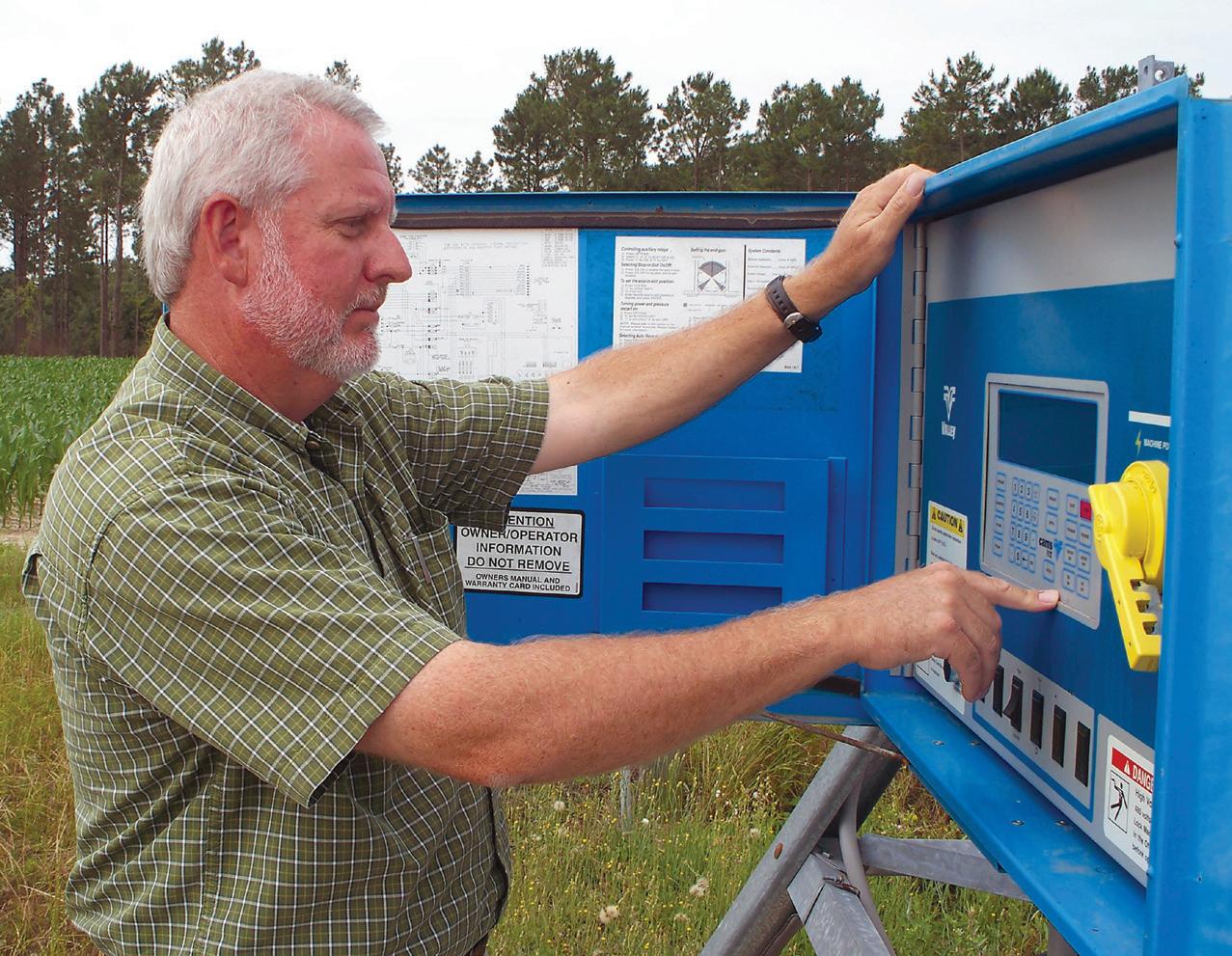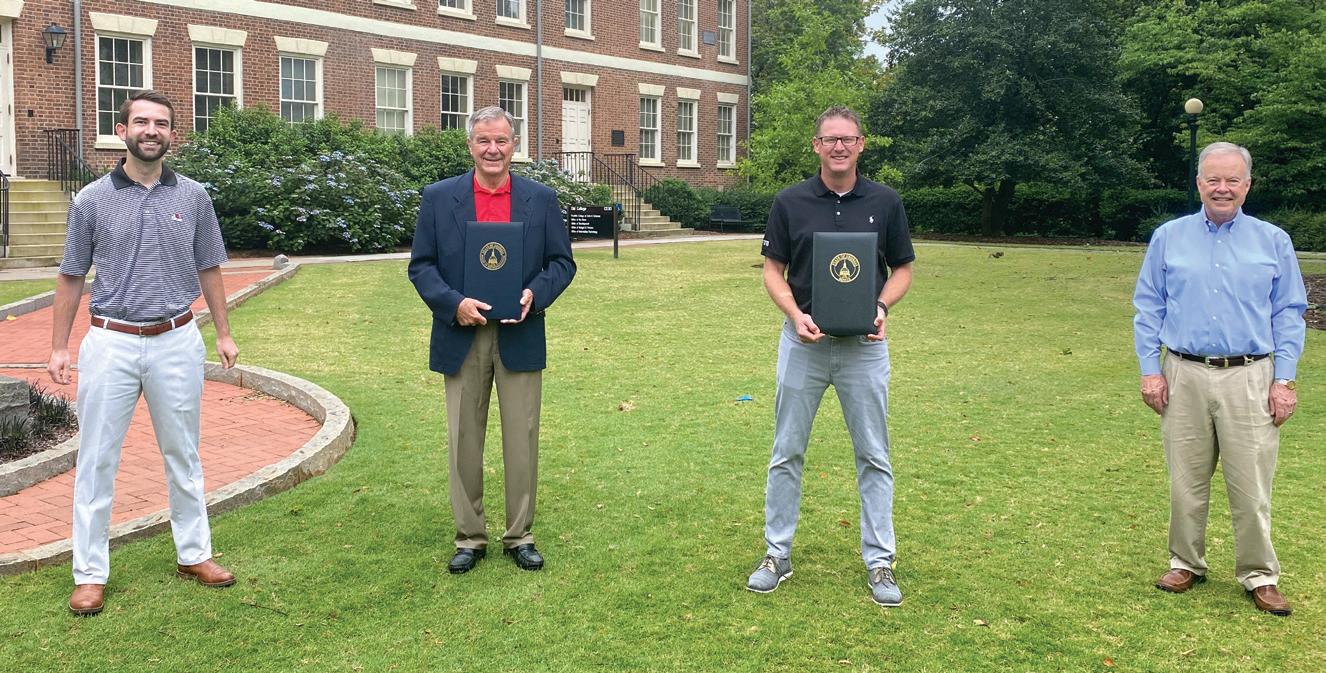
4 minute read
Water use innovation UGA Extension helps Georgia improve efficiency
Water use innovation
UGA Extension helps Georgia improve efficiency
by Sharon Dowdy, News Editor, UGA College of Agricultural and Environmental Sciences
To help improve Georgia’s agricultural water use efficiency, UGA Extension created the AgWET Project, which includes UGA faculty from various disciplines in partnership with Flint River Soil and Water Conservation District experts, UGA Extension agents, crop consultants and farmers.
For the past three decades, Alabama,
Florida and Georgia have been battling over control of water resources in what has become known as the “tri-state water wars.” Judge Paul Kelly of New Mexico, a Supreme Courtappointed expert known as a “special master,” recently ruled in favor of Georgia in the ongoing Florida vs. Georgia court case.
“Two years ago, the original Special Master on the case chided Georgia, saying the state doesn’t monitor its water usage very well,” said Laura Perry Johnson, associate dean for University of Georgia Cooperative Extension. “This year, that note was removed as the state now does an amazing job of tracking water usage.”
Johnson said UGA Extension has strengthened its water resource education program by adding new personnel and new programs.
Tools, techniques, technologies
“UGA is a leader in the development of innovative irrigation efficiency tools, techniques and technologies and UGA Extension works diligently with Georgia’s ag community to deploy these innovations across the state, particularly in southwest Georgia, which has become the focal point of the court case,” Johnson said.
To help improve Georgia’s agricultural water use efficiency, UGA Extension created the Agricultural Water Efficiency Team (AgWET), which includes 16 UGA faculty from various disciplines in partnership with Flint River Soil and Water Conservation District experts, 14 UGA Extension agents, four crop consultants and 53 farmers.
This program helps farmers better schedule irrigation, gives them a better understanding of why they may need to use these tools to help schedule their irrigation and increases their water-use efficiency through the use of soilmoisture sensors and smartphone apps.
AgWET has increased the adoption of innovative and efficient irrigation practices and technologies like soil moisture sensor systems across south Georgia, said Calvin Perry, superintendent of UGA’s Stripling Irrigation Research Park in Camilla, Georgia.
“While the AgWET project cannot claim all the credit, soil moisture sensor vendors operating in Georgia report a substantial uptick in system sales following the start of the AgWET project,” he said. “One vendor had a 536% increase in sales and another saw a 370% increase.”
“Ag water conservation and water use efficiency are what we’re all about and why Stripling Park was created.”
At Stripling Irrigation Research Park, more than 10 scientists conduct water-related research on crops like cotton, corn, peanuts, soybeans, sweet corn and vegetables, including collaborative projects with manufacturers of pivots, sprinklers and sensors.
Technology created at UGA has also helped improve water use efficiency in Georgia. With funding from the Georgia Cotton Commission and the Georgia Peanut Commission, UGA researchers developed a low-cost, wireless soilmoisture sensing system. UGA Smart Sensor Array uses a dense network of smart sensor nodes to accurately determine soil moisture variability.
“This system provides real-time soil-moisture data at multiple depths using inexpensive sensors and wireless telemetry. Several vendors have modeled their sensor systems on of the UGA system,” Perry said. “This type of information is necessary to make good irrigation scheduling decisions — especially if a variablerate irrigation system is used.”
UGA Extension specialists have also reported a notable increase in the use of mobile apps for soil moisture sensor and scheduling. UGA CAES researcher George Vellidis developed apps for advanced irrigation scheduling for use by farmers, agents and others in the industry.
UGA’s SmartIrrigation App can be used in corn, cotton and soybean fields. A version of the app will soon be available for pecan growers. To date, the app has been downloaded nearly 3,000 times. UGA scientists also cooperated on the creation of USDA’s IrrigatorPro app.
To help traditional center-pivot irrigation systems work more efficiently, UGA scientists engineered Variable Rate Irrigation (VRI) technology, which allows control of both where and how much irrigation is applied.
Helping farmers use water wisely has long been a part of Extension’s mission, but UGA Extension helps urban Georgians use water wisely, too.
Urban water management
Just over a year ago, Rolando Orellana was named the urban water management agent in the UGA Center for Urban Agriculture. He works with green industry leaders and teaches urban Extension agents how to help their clients to manage water wisely in the landscape, especially through irrigation systems.
With a $9,800 internal UGA Extension Innovation Grant and industry support, Orellana developed an irrigation training specifically designed to educate UGA Extension agents in 18 urban counties. Using the train-the-trainer model, Orellana's goal is to “build capacity with the agents so they can help green industry clients and consumers in their counties.” Rolando Orellana is the urban water management agent in the UGA Center for Urban Agriculture. Using the train-the-trainer model, Orellana's goal is to “build capacity with the agents so they can help green industry clients and consumers in their counties.”











